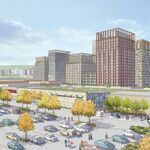Steve X
Senior Member
Quebec does have more super-2's which are nice for their low usage. Some are conventional highways like the A955. Autoroutes in many urban areas are very worn out. Ontario's urban highways are much better maintained even compared to the interstates.Quebec's Autoroutes are weird. Some are Super-2s, some are almost-but-not-quite freeways, and some are overbuilt relics, especially in the Quebec City area. There's the long and slow A20 section through Ile-Perrot and Vaudreuil, but at least there are alternatives: A40 or A30, both of which connect well. The A20/A520 interchange is being upgraded with improved connections to the airport.
Ontario isn't perfect: until recently, Highway 406 wasn't complete as a multilane freeway, and Highway 420 never will be. Even in the US, there are some notable gaps in the interstate network. Interstate 70 has a few lights in the middle of nowhere Pennsylvania.
Many of the old interstates existed before the interstate system was defined. The I-70 designation exits the turnpike to another freeway hence the traffic light. That community don't want them to build a ramp so they don't loose their local businesses. Ontario tries to have one main throughway for one designation. Notability the 400 NB exits the main highway at the 400/11 split. The 417 WB exits the main throughway at the split with highway 17 (now R.R. 174) on The Queensway. Also the 403 WB exits the main throughway at the 407 interchange. These examples exist due to the fact that the original planned alignment was to go straight but later changed. The interstate designation however is just a number applied to main existing freeways, especially turnpikes. Quebec saw all there conventional highways renumbered in the 70s. Hence why it's more organized that MTO's 1917 designations.
The 420 was actually part of the QEW until it took a new alignment to Fort Erie back in the 70s. It was never meant to be a freeway of it's own. The left exit indicates that the original highway exited there.




